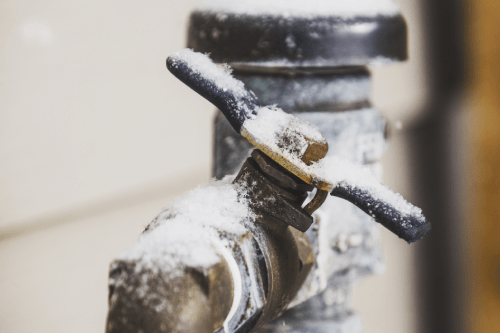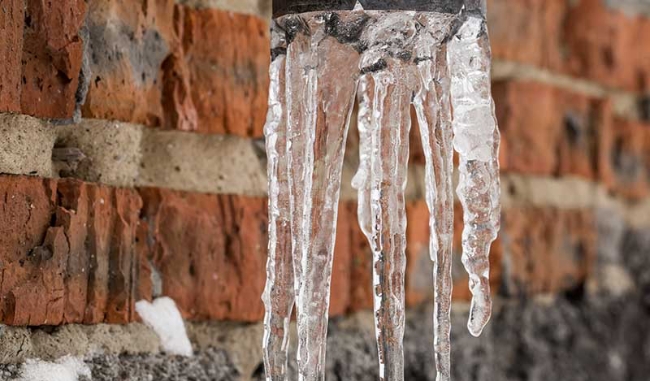How to Keep Your Pipes from Cold Weather Issues: Crucial Advice
How to Keep Your Pipes from Cold Weather Issues: Crucial Advice
Blog Article
Just how do you feel on the subject of 6 Ways to Prevent Frozen Pipes?

Winter can damage your pipes, especially by freezing pipes. Right here's how to prevent it from happening and what to do if it does.
Intro
As temperatures decrease, the threat of icy pipes increases, potentially bring about costly fixings and water damages. Understanding just how to avoid icy pipes is essential for home owners in chilly environments.
Comprehending Icy Pipes
What creates pipes to ice up?
Pipes freeze when revealed to temperatures listed below 32 ° F (0 ° C) for expanded periods. As water inside the pipelines ices up, it expands, taxing the pipeline walls and potentially creating them to break.
Risks and damages
Icy pipes can cause water supply disruptions, residential property damages, and costly repair services. Burst pipes can flooding homes and create substantial architectural damage.
Indicators of Frozen Pipeline
Recognizing icy pipelines early can stop them from breaking.
How to identify icy pipelines
Search for decreased water flow from taps, uncommon odors or sounds from pipelines, and visible frost on revealed pipelines.
Prevention Tips
Insulating prone pipes
Cover pipes in insulation sleeves or use warmth tape to safeguard them from freezing temperature levels. Focus on pipelines in unheated or outside locations of the home.
Heating strategies
Keep indoor spaces appropriately heated up, specifically areas with pipes. Open up cabinet doors to permit warm air to flow around pipelines under sinks.
Safeguarding Outside Pipes
Garden hose pipes and outdoor faucets
Separate and drain garden tubes before winter season. Mount frost-proof spigots or cover outdoor faucets with shielded caps.
What to Do If Your Pipelines Freeze
Immediate actions to take
If you think icy pipelines, maintain taps available to eliminate stress as the ice melts. Use a hairdryer or towels taken in warm water to thaw pipelines slowly.
Long-Term Solutions
Structural modifications
Think about rerouting pipelines far from outside wall surfaces or unheated locations. Include additional insulation to attics, basements, and crawl spaces.
Updating insulation
Buy high-quality insulation for pipelines, attics, and wall surfaces. Appropriate insulation helps keep constant temperature levels and minimizes the risk of icy pipelines.
Final thought
Preventing frozen pipelines requires aggressive measures and quick feedbacks. By comprehending the reasons, indicators, and preventive measures, house owners can protect their plumbing during winter.
6 Proven Ways to Prevent Frozen Pipes and Protect Your Home
Disconnect and Drain Garden Hoses
Before winter arrives, start by disconnecting your garden hoses and draining any remaining water. Close the shut-off valves that supply outdoor hose bibs and leave the outdoor faucet open to allow any residual water to drain. For extra protection, consider using faucet covers throughout the colder months. It’s also important to drain water from any sprinkler supply lines following the manufacturer’s directions.
Insulate Exposed Pipes
Insulating your pipes is an effective way to prevent freezing. Pipe insulation is readily available at home improvement stores and is relatively inexpensive. Pay close attention to pipes in unheated areas such as the attic, basement, crawl spaces, or garage. Apply foam insulation generously to create a buffer against the cold. You can also wrap your pipes in heat tape or thermostat-controlled heat cables for added warmth.
Seal Air Leaks
Inspect your home for any cracks or openings that could let in cold air. Seal any holes around the piping in interior or exterior walls, as well as the sill plates where your home rests on its foundation. Additionally, make sure to keep your garage door closed unless you’re entering or exiting. Leaving it open creates a significant air leak that can lead to frozen pipes.
Allow Warm Air Circulation
During cold snaps, it’s essential to allow warm air to circulate evenly throughout your home. Leave interior doors ajar to promote better airflow. Open kitchen and bathroom cabinets to help distribute heat consistently around the rooms. If you have small children or pets, be sure to remove any household chemicals or potentially harmful cleaners from open cabinets for safety.
Let Faucets Drip
A small trickle of water can make a big difference in preventing ice formation inside your pipes. When temperatures drop significantly, start a drip of water from all faucets served by exposed pipes. This continuous flow helps prevent the water from freezing. Additionally, running a few faucets slightly can relieve pressure inside the pipes, reducing the chances of a rupture if the water inside does freeze.
https://choateshvac.com/6-proven-ways-to-prevent-frozen-pipes-and-protect-your-home/

As a passionate reader on 6 Ways to Prevent Frozen Pipes, I thought sharing that piece of content was worth the trouble. Do you know about somebody who is sincerely interested in the niche? Do not hesitate to promote it. Many thanks for your time. Please pay a visit to our website back soon.
This Page Report this page